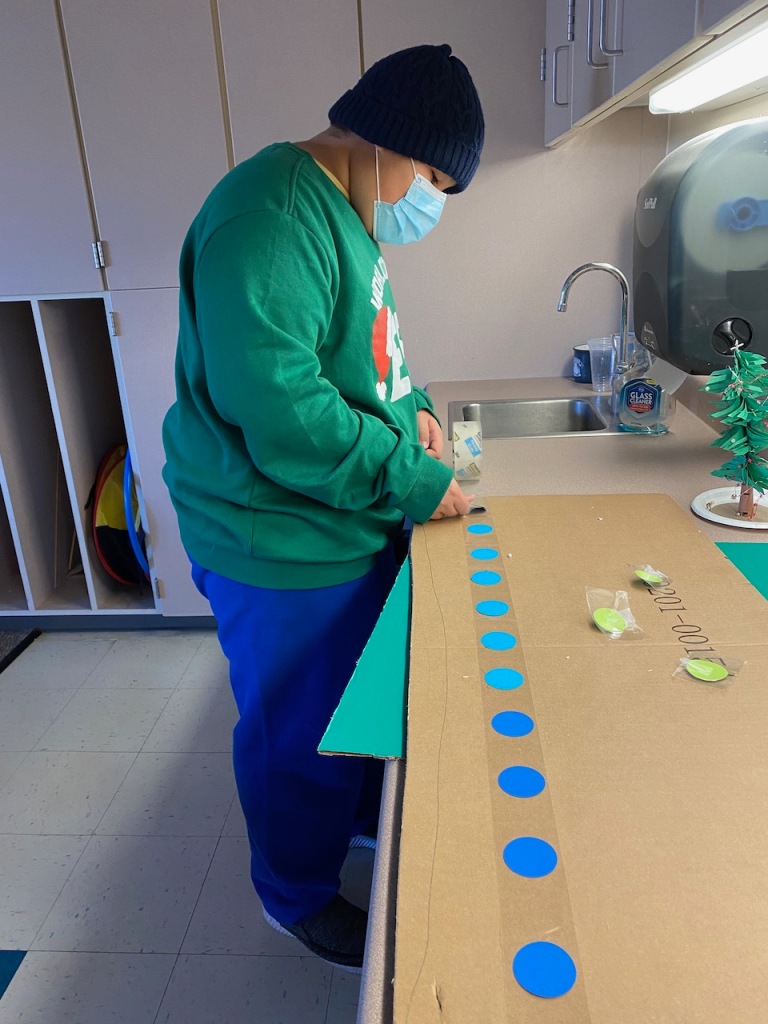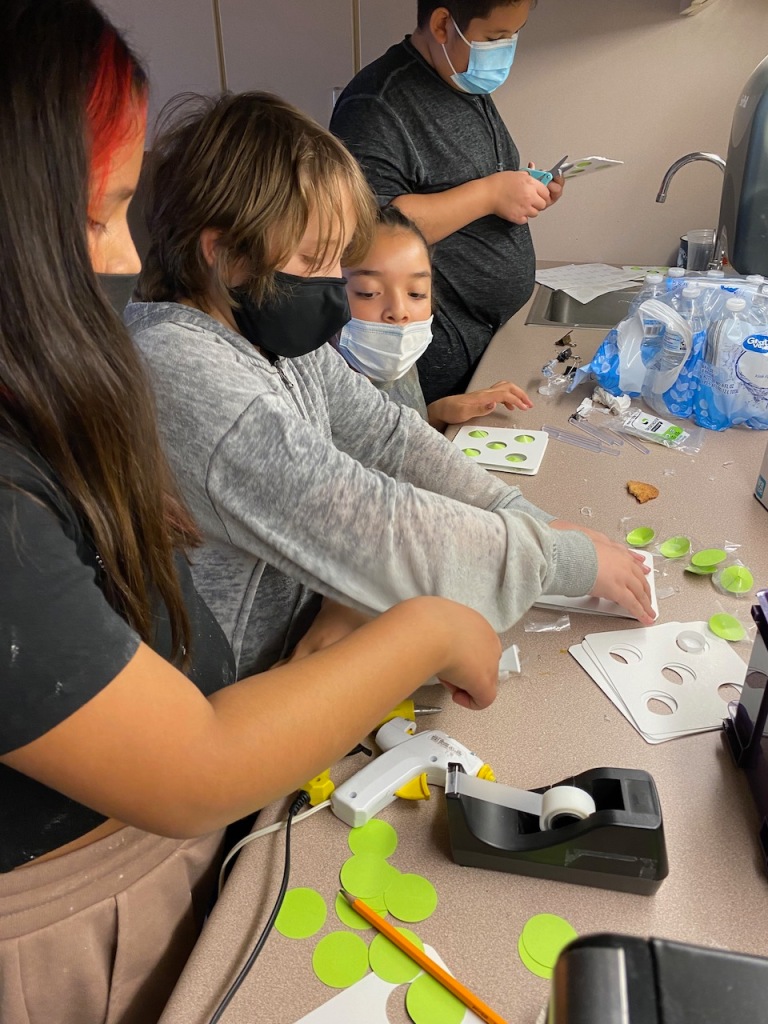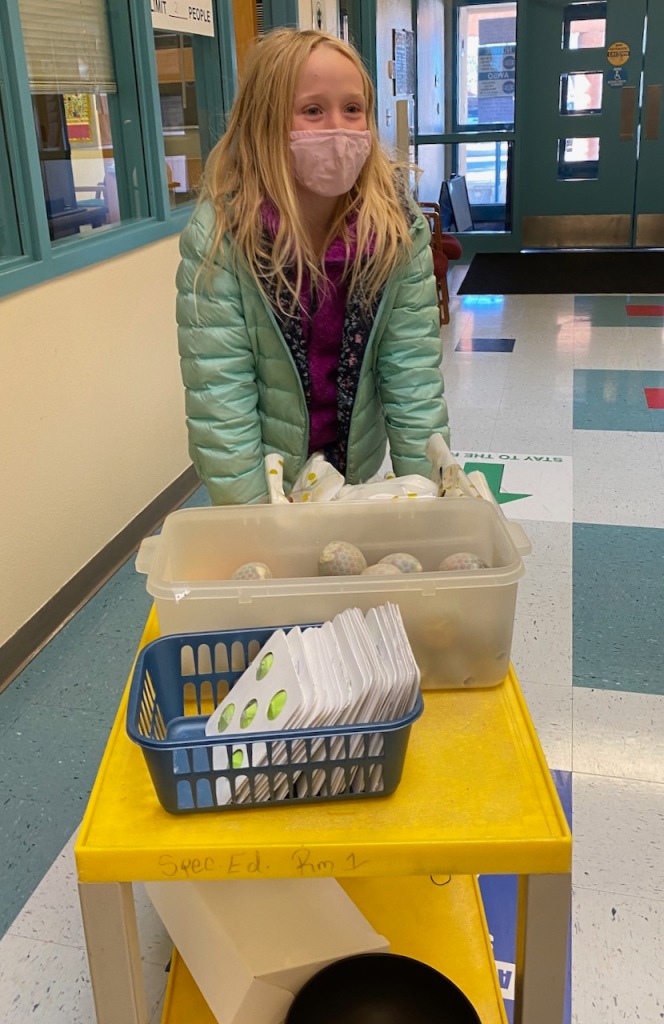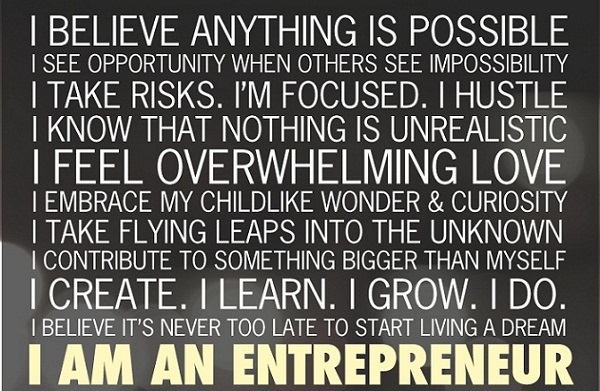Posts Tagged ‘entrepreneurship’
Social Entrepreneurship with Elementary Students: A Perfect STEAM Lesson
I have done a social entrepreneurship unit with three groups of gifted students, grades 3rd through 6th. It was one of my favorite units . . . ever, and from their reactions, I believe it was one of theirs, too. I call it a perfect STEAM (science, technology, engineering, arts, and math) unit. The first part of this post explains some of the rationale for this project, and the second part describes the unit, itself.
Why a Unit on Social Entrepreneurship
First, I wanted my learners, who are from lower income families, to develop both an entrepreneur mindset and entrepreneur skills along with the creativity and innovation that comes with these skills.
Entrepreneurship education benefits students from all socioeconomic backgrounds because it teaches kids to think outside the box and nurtures unconventional talents and skills. Furthermore, it creates opportunity, ensures social justice, instills confidence and stimulates the economy. Because entrepreneurship can, and should, promote economic opportunity, it can serve as an agent of social justice. Furthermore, entrepreneurship has historically spurred minorities, women and immigrants to create better lives for themselves and their families. (Why Schools Should Teach Entrepreneurship)
Second, not only did I want my learners to gain entrepreneur skills, I wanted them to experience the benefits of starting a company in order to raise money to give to a “cause” also known as a form of social entrepreneurship.
Not every child is temperamentally suited to be a social entrepreneur. Not every child is suited to be a scientist, mathematician, or artist. But elementary school-age kids do have the natural curiosity, imagination, drive, and ability to come up with innovative ways to change the world for the better. By exposing our kids to a variety of disciplines, including social entrepreneurship, we are teaching them they have what it takes to “be the change.” One well-known expert on social entrepreneurship, David Bornstein, puts it this way: Once an individual has experienced the power of social entrepreneurship, he or she will “never go back to being a passive actor in society.” (Young Kids Need to Learn About Social Entrepreneurship)
Third, this unit met my own criteria for an effective and powerful unit:
- Instructional challenges are hands-on, experiential, and naturally engaging for learners.
- Learning tasks are authentic, relevant, and promote life skills outside of the formal classroom.
- The challenges are designed to be novel, and create excitement and joy for learners.
- Learner choice and voice are valued.
- Lessons address cross curricular standards. They are interdisciplinary (like life) where multiple, cross-curricular content areas are integrated into the instructional activities.
- Learning activities get learners interested in and excited about a broad array of topics especially in the areas of science, engineering, math, language arts, and the arts.
- Communication, collaboration, and problem solving are built into the learning process.
- Reading and writing are integrated into the learning activities in the form of fun, interesting books and stories, and writing stories, narratives, journalistic reports.
- Educational technology is incorporated with a focus on assisting with the learning activities not to learn technology just for the sake of learning it.
- There is a natural building of social emotional skills – tolerance for frustration, expression of needs, working as a team.
Schedule of Learning Activities
Here was the schedule of learning activities I used for this unit:
- Introduction
- Video
- Online Games
- Kidpreneurs
- Market Survey – Google Form
- Analyzing Results, Deciding of Products, Testing Products
- Expense Sheet – Expenses and Assets
- Business Plan
- Making and Selling the Products
- Visiting the Interfaith Homeless Shelter to Deliver the Profits
Introduction
The following activities were used to teach learners about entrepreneurship and social entrepreneurship:
Video. Learners were first introduced to entrepreneurship with the following video:
Kidpreneur Readings. We read the Kidpreneurs’ book and did exercises from book – these readings and exercises continued throughout the unit.
Online Games. They were then given the opportunity to play some online games that focus on entrepreneurship:
- Lemonade Stand – http://www.coolmath-games.com/0-lemonade-stand
- Coffee Shop – http://www.coolmath-games.com/0-coffee-shop
- Building Rush – https://www.coolmath-games.com/0-building-rush
- Cookie Tycoon – http://www.addictinggames.com/strategy-games/cookietycoon.jsp
- The Uber Game – https://ig.ft.com/uber-game/
Market Survey
Based on their own interests and hobbies (and with the help of the Kidpreneur workbook), my learners decided on possible products they could make (all products were handmade) and sell. They developed a market survey from this information:
Analyzing Results, Deciding of Products, Testing Products
Learners requested that their respective classes and family members take their survey. It was quite a treat watching them continually examine the graphs found on the Google form response page. Here is an example from one group’s survey:

From the results, they decided to sell:
- Orbeez Stress Balls – see https://youtu.be/DK1q7WjxcQc for instructions,
- Fingerboards – se https://youtu.be/PS0nmiMkPiY for ideas how to create these,
- Pop Its – see http://www.ikatbag.com/2021/02/cardboard-popper-tutorial-by-kate.html for instructions,
- Sugar Christmas Cookies – see https://www.allrecipes.com/recipe/10402/the-best-rolled-sugar-cookies/ for the recipe the kids used.
They started by testing out how to make these products to discover how to best produce them.
Expense Form
I acted as the bank and purchased the materials for the learners to make products. I saved the receipts, made copies of them, and had each learner create her or his Google sheet to record expenses.
Business Plan
From all of this information, the learners developed a business plan using the following Kids-Business-Plan simplified for kids. It included:
- Their business name – Gifted Community Craft Story
- Startup costs
- Cost per item
- Marketing strategies
Highlights – Making and Packaging the Products
Here is a photo essay that shows the students making and packaging the products.
Highlights – Selling the Products
Students Delivering Raised Monies to The Interfaith Community Shelter (serves the homeless)
Standards Addressed
Framework for 21st Century Learning
Financial, Economic, Business, and Entrepreneurial Literacy
- Know how to make appropriate personal economic choices
- Understand the role of the economy in society
- Use entrepreneurial skills to enhance workplace productivity and career options
Common Core State Standards – Math (budgets and money management)
- Use place value understanding and properties of operations to perform multi-digit arithmetic.
- Use the four operations to solve word problems involving distances, intervals of time, liquid volumes, masses of objects, and money, including problems involving simple fractions or decimals, and problems that require expressing measurements given in a larger unit in terms of a smaller unit. Represent measurement quantities using diagrams such as number line diagrams that feature a measurement scale.
Common Core State Standards – ELA
- Present claims and findings, sequencing ideas logically and using pertinent descriptions, facts, and details to accentuate main ideas or themes; use appropriate eye contact, adequate volume, and clear pronunciation.
ISTE Standards for Students
- Students use a variety of technologies within a design process to identify and solve problems by creating new, useful or imaginative solutions.
- Students develop and employ strategies for understanding and solving problems in ways that leverage the power of technological methods to develop and test solutions.
NAGC Standards
- Students with gifts and talents demonstrate their potential or level of achievement in their domain(s) of talent and/or areas of interest.
- Students with gifts and talents develop knowledge and skills for living in and contributing to a diverse and global society.
- Students with gifts and talents demonstrate personal and social responsibility.
- Students with gifts and talents develop competence in interpersonal and technical communication skills. They demonstrate advanced oral and written skills and creative expression. They display fluency with technologies that support effective communication and are competent consumers of media and technology.
Additional Resources
- Ten Helpful Tips To Becoming An Kidpreneur [a kid that is an entrepreneur] https://www.huffingtonpost.com/entry/ten-helpful-tips-to-becoming-an-kidpreneur-a-kid-that_us_58d42f17e4b0f633072b35c6?ncid=engmodushpmg00000004
- Lesson Plans – Teaching Entrepreneurship http://www.teachingentrepreneurship.org/category/lesson-plans/
Elementary Social Entrepreneurship: A Perfect STEAM Lesson
I have done a social entrepreneurship unit with two groups of gifted students, grades 2nd through 5th. It was one of my favorite units . . . ever, and from their reactions, I believe it was one of theirs, too. I call it a perfect STEAM (science, technology, engineering, arts, and math) unit. The first part of this post explains some of the rationale for this project, and the second part describes the unit, itself.
Why a Unit on Social Entrepreneurship
First, I wanted my learners, who are from lower income families, to develop both an entrepreneur mindset and entrepreneur skills along with the creativity and innovation that comes with these skills.
Entrepreneurship education benefits students from all socioeconomic backgrounds because it teaches kids to think outside the box and nurtures unconventional talents and skills. Furthermore, it creates opportunity, ensures social justice, instills confidence and stimulates the economy. Because entrepreneurship can, and should, promote economic opportunity, it can serve as an agent of social justice. Furthermore, entrepreneurship has historically spurred minorities, women and immigrants to create better lives for themselves and their families. (Why Schools Should Teach Entrepreneurship)
Second, not only did I want my learners to gain entrepreneur skills, I wanted them to experience the benefits of starting a company in order to raise money to give to a “cause” also known as a form of social entrepreneurship.
Not every child is temperamentally suited to be a social entrepreneur. Not every child is suited to be a scientist, mathematician, or artist. But elementary school-age kids do have the natural curiosity, imagination, drive, and ability to come up with innovative ways to change the world for the better. By exposing our kids to a variety of disciplines, including social entrepreneurship, we are teaching them they have what it takes to “be the change.” One well-known expert on social entrepreneurship, David Bornstein, puts it this way: Once an individual has experienced the power of social entrepreneurship, he or she will “never go back to being a passive actor in society.” (Young Kids Need to Learn About Social Entrepreneurship)
Third, this unit met my own criteria for an effective and powerful unit:
- Instructional challenges are hands-on, experiential, and naturally engaging for learners.
- Learning tasks are authentic, relevant, and promote life skills outside of the formal classroom.
- The challenges are designed to be novel, and create excitement and joy for learners.
- Learner choice and voice are valued.
- Lessons address cross curricular standards. They are interdisciplinary (like life) where multiple, cross-curricular content areas are integrated into the instructional activities.
- Learning activities get learners interested in and excited about a broad array of topics especially in the areas of science, engineering, math, language arts, and the arts.
- Communication, collaboration, and problem solving are built into the learning process.
- Reading and writing are integrated into the learning activities in the form of fun, interesting books and stories, and writing stories, narratives, journalistic reports.
- Educational technology is incorporated with a focus on assisting with the learning activities not to learn technology just for the sake of learning it.
- There is a natural building of social emotional skills – tolerance for frustration, expression of needs, working as a team.
Schedule of Learning Activities
Here was the schedule of learning activities I used for this unit:
- Introduction
- Video
- Online Games
- Kidpreneurs
- Market Survey – Google Form
- Analyzing Results, Deciding of Products, Testing Products
- Expense Sheet – Expenses and Assets
- Business Plan
- Promotional Flyer
- Sales and Record Sheet
Introduction
Video. Learners were introduced to entrepreneurship with the following video:
Kidpreneur Readings and Workbook. We began reading the Kidpreneurs’ book (free book can be ordered at https://kidpreneursbook.com/free-book) and doing exercises from the accompanying workbook – these readings and exercises continued throughout the unit. Here is an infographic from the authors of these books:
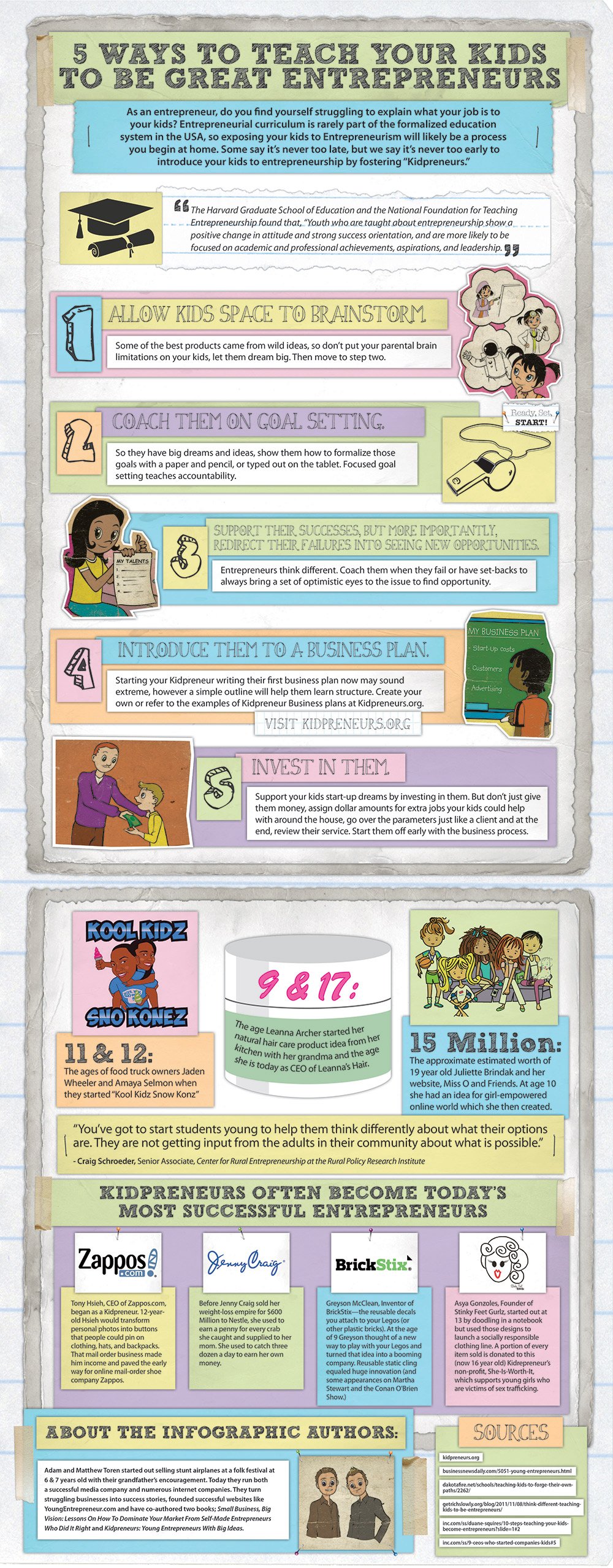
Online Games. They were then given the opportunity to play some online games that focus on entrepreneurship:
- Lemonade Stand – http://www.coolmath-games.com/0-lemonade-stand
- Coffee Shop – http://www.coolmath-games.com/0-coffee-shop
- Building Rush – https://www.coolmath-games.com/0-building-rush
- Cookie Tycoon – http://www.addictinggames.com/strategy-games/cookietycoon.jsp
- The Uber Game – https://ig.ft.com/uber-game/
Market Survey
Based on their own interests and hobbies (and with the help of the Kidpreneur workbook), my learners decided on possible products they could sell, and with my help, added possible organizations where profits would go. They developed a market survey from this information:
Analyzing Results, Deciding of Products, Testing Products
Learners requested that their respective classes and family members take their survey. It was quite a treat watching them continually examine the graphs found on the Google form response page. Here is an example from one student:
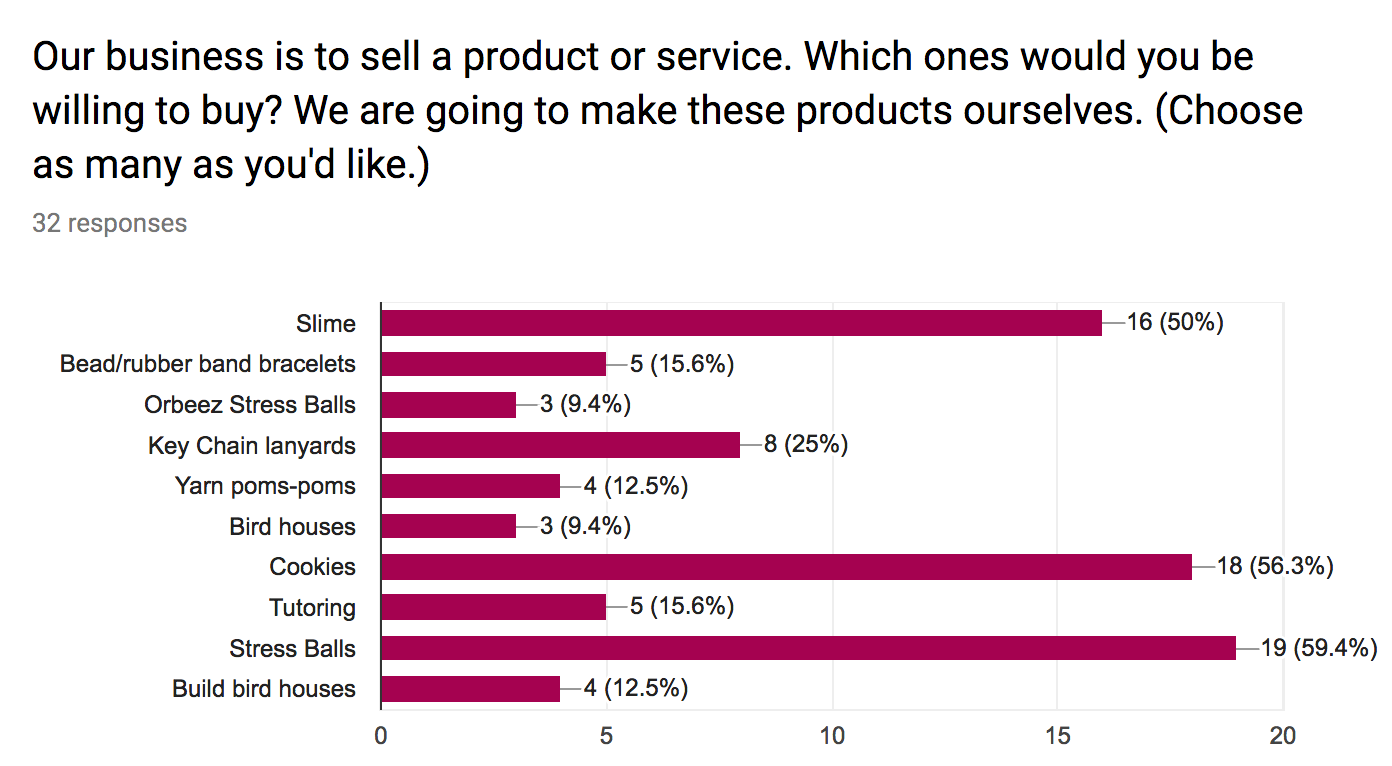
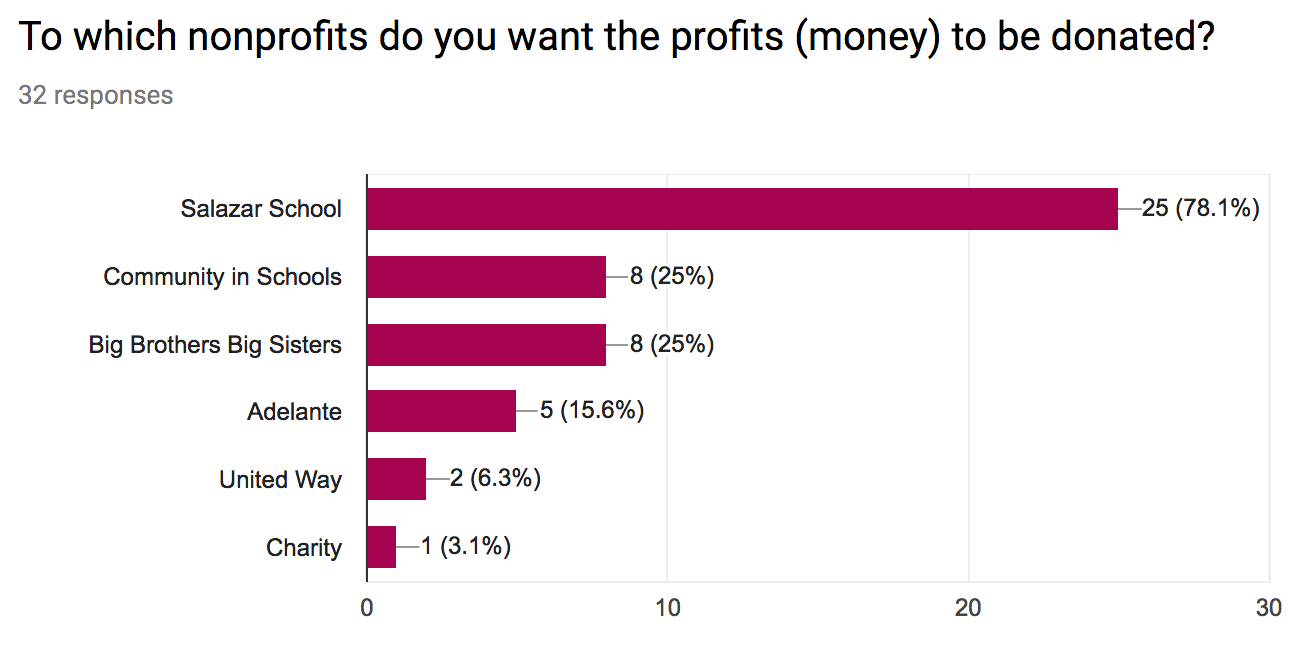
From the results, they decided to sell Orbeez Stress Balls and glitter slime donating the profits to our school. They tested out making these products – different sizes and slime recipes – to discover which would be best for production.
Expense Form
I acted as the bank and purchased the materials for the learners to make Orbeez Stress Balls and Slime. I saved the receipts, made copies of them, and had each learner create her or his Google sheet to record expenses.
(Still making sales – students will update income this coming week.)
Business Plan
From all of this information, the learners developed a business plan using the following Kids-Business-Plan simplified for kids. It included:
- Their business name – Gifted Community Craft Story
- Startup costs
- Cost per item
- Marketing strategies
Promotional Flyer
The learners created the following promotional flyer using Google Docs. Luckily, our school has a color printer so I was able to print them out in color for the learners to post throughout the school.
Sales and Record Sheet
Another document created by the learners was the order form:
Highlights – Selling, Making, Packaging, and Delivering the Products
Students Delivering Raised Monies to the Selected Nonprofit – The Interfaith Community Shelter
Additional Resources
- Ten Helpful Tips To Becoming An Kidpreneur [a kid that is an entrepreneur] https://www.huffingtonpost.com/entry/ten-helpful-tips-to-becoming-an-kidpreneur-a-kid-that_us_58d42f17e4b0f633072b35c6?ncid=engmodushpmg00000004
- Lesson Plans – Teaching Entrepreneurship http://www.teachingentrepreneurship.org/category/lesson-plans/
- Little Entrepreneurs: Business For Kids http://www.bschool.com/little-entrepreneurs-business-for-kids/
Design Challenge
This year I have been focusing on design challenges and design thinking with my gifted elementary students, grades 2nd through 6th. Last semester I introduced a series of activities to have them explore, learn about, and interact with design thinking principles and strategies. For a description of those activities, see https://usergeneratededucation.wordpress.com/2016/09/25/introducing-design-thinking-to-elementary-learners/
To re-introduce design thinking again for this spring semester, this week I asked them to do the Extraordinaire Design Studio:
The Extraordinaires® Design Studio is a powerful learning tool, that introduces children to the world of design, teaching them the foundations of design in a fun and engaging way. Your clients The Extraordinaires® are over the top characters with extraordinary needs, it’s the job of your student to design the inventions they need to fit their worlds. Choose your design client, from a rap star to a vampire teen or even an evil genius plotting in his lair. Look at the exceptionally detailed illustrated character cards to learn more about them, their world and their needs. Once you’ve chosen your Extraordinaire, pick a design project. It could be a communications device for a soldier or a drinks carrier for a circus acrobat. https://www.extraordinaires.com/shop/the-extraordinaires-design-studio-deluxe
To play, the character cards are laid out and then the inventions or gadgets are randomly placed on the character cards. The learners can then select which character/invention pair for which they would like to design.

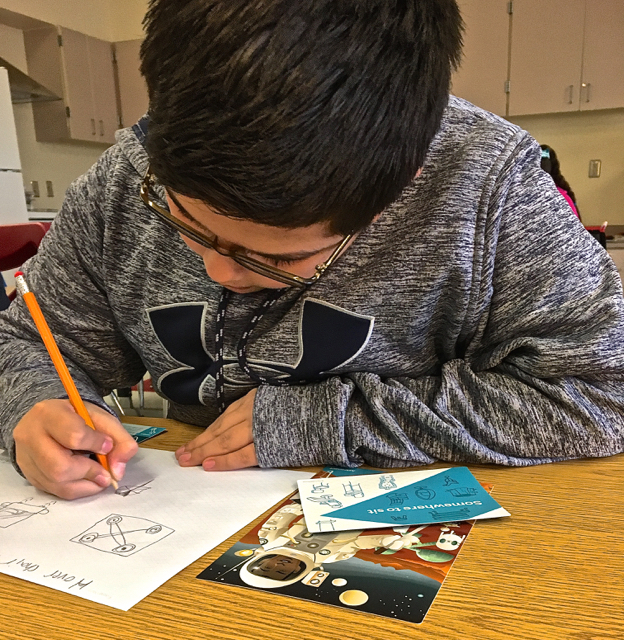
After drawing out and labeling their inventions and gadgets, they took pictures of them and posted their images along with a short description on a blog post. Some example learner work follows:
Hoverchair 1.0
TJ selected a hover chair for an astronaut.


Le Phone
Sebastian selected a communication device for a fairy.


Bearded Flask
Will selected a drink carrier for a wizard.
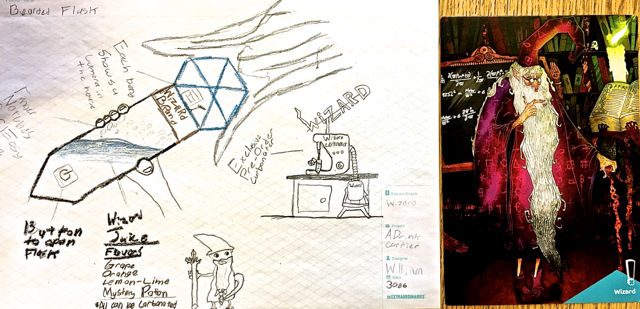

This activity was a high interest, high engagement, high yield instructional task. Some learners had a little trouble getting started but once they did, their designs and inventions were fantastic. I think the fanciful nature of the cards helped engagement. The company has a free app to go along with their set for the designs to be uploaded and described. This app did not do what was promised so I cannot recommend its use.
What I think this type of design challenge does especially well is to introduce the idea that design thinking often encompasses designing a specific type of product for a specific type of client. It does a good job of introducing learners to the core of the design thinking process:
The Design Thinking process first defines the problem and then implements the solutions, always with the needs of the user demographic at the core of concept development. (http://dschool.stanford.edu/redesigningtheater/the-design-thinking-process/)
This set does cost some money but there are other free options:
- Maker Education Card Game that I created
- Destination Imagination Instant Challenge
Maker Education Card Game
This game, which I first introduced in the Maker Education Card Game, is a card game that ends with the makers making something based on selected cards. Each maker picks a card from each of the three categories:
- The Thing or Process
- The Product
- The Population.
For example, a maker may choose, Create a Blueprint from The Thing or Process category; a New Toy from the Product category; and Adults from the population category meaning the maker would create a blueprint for a new toy for adults. The educator and makers can choose whether it is a “blind” pick or one in which the makers see their options. (Note – I would love to increase options in all categories. If you have additional card ideas, please leave them in the comments section).
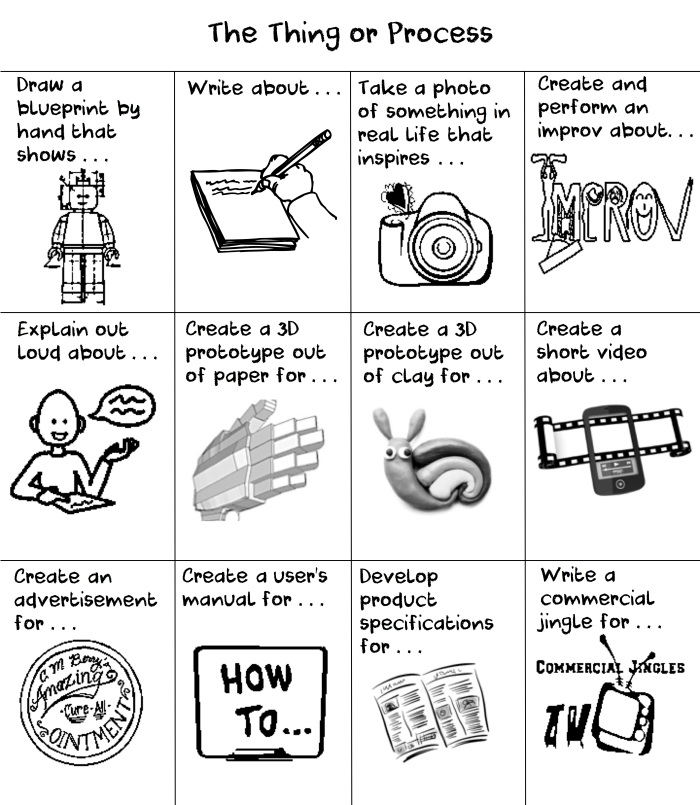


Destination Imagination Instant Challenges
Destination Imagination offers similar design challenges
The Destination Imagination program is a fun, hands-on system of learning that fosters students’ creativity, courage and curiosity through open-ended academic Challenges in the fields of STEM (science, technology, engineering and mathematics), fine arts and service learning. Our participants learn patience, flexibility, persistence, ethics, respect for others and their ideas, and the collaborative problem solving process. https://www.destinationimagination.org/mission-vision/
Combination Challenge
Randomly choose one or more items from A and one or more items from B, C, D or E and get busy.

Roll-A- Challenge

Teaching and Facilitating Entrepreneurship in the School Setting
I grew up in a family where my grandfathers and father were entrepreneurs – they started and ran their own businesses. My paternal grandfather, as a young man, bought a small vacuum cleaner sales store and later, changed it to selling entertainment electronics. Later, with my father, they moved to a larger space with increased inventory. A smaller store was opened in a a town nearby where I was a sales clerk during my teenage years. Their small business was a financial success as it supported our families with a strong middle class lifestyle for close to fifty years. I rejected this entrepreneurship spirit. Making money never interested me (I am a teacher, for gosh sake).
Fast forward to last year – I had the privilege of visiting Blanche Kelso Bruce Academy (BKBA) in Detroit and spending some time with its superintendent, Blair Evans. Mr. Evans demonstrated the school’s digital fabrication program and explained their permaculture program. I was impressed with these real-life skills building programs, but what resonated with me was what he said about educating the poor Detroit youth. He said that poor communities are very dependent on purchasing goods and services from sources outside of their communities. They lacked the awareness, skills, and where-with-all related to producing services and products for themselves. The goal is for the youth learn some skills, such as growing their own food or producing their own products, to establish some self-sufficiency.
This is reinforced by Steve Mariotti, founder of the Network for Teaching Entrepreneurship (NFTE), an expert in education for at-risk youth.
As an educator of at-risk youth for over thirty years, I’ve seen only one thing consistently bring children raised in poverty into the middle class: entrepreneurship education. Owner-entrepreneurship education empowers young people to make well-informed decisions about their future, whether they choose to become entrepreneurs or not. Our students discover that, like every individual, they already own five powerful assets: time, talent, attitude, energy and unique knowledge of one’s local market. They learn to use these assets to create businesses and jobs, and build wealth in their communities. I’ve seen apathetic kids whose families have been on welfare for generations get excited about school and their futures. They discover that they can participate in our economy and earn money. They quickly realize that to do so, they must to learn to read, write and do math. (Why Every School in America Should Teach Entrepreneurship)
This had me thinking of lessons I learned growing up in family focused on entrepreneurship. I learned customer service, the ethics being in business (and then ethics, in general), focusing on being the best while not worrying about the other “guy” while you do, and the skills-motivation to go after what I need and want. None of these lessons focuses directly on making money.
Because of my visit to BKBA and reflecting on my family’s business, I moved from an attitude of rejecting entrepreneurship (thinking it was about working for money) in formal education to being an advocate as I realized all of the life skills it can teach and reinforce.
Through entrepreneurship education, young people learn organizational skills, including time management, leadership development and interpersonal skills, all of which are highly transferable skills sought by employers. According to a report by the D.C. Children and Youth Investment Corporation, other positive outcomes include:
- improved academic performance, school attendance; and educational attainment
- increased problem-solving and decision-making abilities
- improved interpersonal relationships, teamwork, money management, and public speaking skills
- job readiness
- enhanced social psychological development (self-esteem, ego development, self-efficacy), and
- perceived improved health status (http://www.dol.gov/odep/pubs/fact/entrepreneurship.htm)
Yong Zhao in his book, World Class Learners: Educating Creative and Entrepreneurial Students, proposes that learner entrepreneurship should be integrated into school curriculum due to the following:
- Massive changes brought about by population growth, technology, and globalization not only demand but also create opportunities for “mass entrepreneurship” and thus require everyone to be globally minded, creative, and entrepreneurial. Entrepreneurship is no longer limited to starting or owning a business, but is expanded to social entrepreneurship, policy entrepreneurship, and intrapreneurship.
- Traditional schooling aims to prepare employees rather than creative entrepreneurs. As a result the more successful traditional schooling is (often measured by test scores in a few subjects), the more it stifles creativity and the entrepreneurial spirit.
- To cultivate creative and entrepreneurial talents is much more than adding an entrepreneurship course or program to the curriculum. It requires a paradigm shift—from employee-oriented education to entrepreneur-oriented education, from prescribing children’s education to supporting their learning, and from reducing human diversity to a few employable skills to enhancing individual talents.
- The elements of entrepreneur-oriented education have been proposed and practiced by various education leaders and institutions for a long time but they have largely remained on the fringe. What we need to do is to move them to the mainstream for all children.
More simple, Blair Evans of BKBA stated, “We’re building people, not just products. We get better outcomes if the kids can engage in useful work. This is much more effective than having them sit on a couch and talk. (Fab Lab: The DIY Factory That Can Make Anyone a Maker)
Raleigh Werberger, a high school history and humanities teacher in Hawaii, got inspired by Zhao’s book. He and his colleagues wanted to develop a ninth grade curriculum that was not only focused on project-based learning, but also wanted to encourage “an authentic, self-starting kind of drive — the sort of thing we see when kids are playing sports, making music, or doing anything that stems from personal passion — in other words, the internal desire to continually improve and to work hard at doing it.”
Students are working in teams to design and construct a small table- or desk-top aquaponics system for the home, and then market their product. In other words, we are blending academics and entrepreneurialism and challenging students to make Hawai’i’s growth more environmentally sustainable.
They are competing to present the best designs – scientifically, educationally and aesthetically – but also the best PR and marketing strategies. On Monday, April 22nd, 2013, they will present their designs and pitches to a team of experts – similar to the ABC show Shark Tank http://mpx9spring.weebly.com/aquaponics-home.html
More remarkably, this project even changed how they used their free time. I saw our students enrolling in online courses in either website or business development. Their social media use took on more significance and had a more authentic stake for them, as students began communicating with web journals and community organizations to expand their online presence and gain “endorsements” for their products. Eventually, their work became polished enough to attract the interest of a few local entrepreneurs who volunteered not only to teach them business skills, but also to host a Shark Tank event and bankroll the winners. While only one team won, the other teams vowed to continue developing their ideas and seek their own independent funding. They had redefined success as not necessarily getting A’s or passing the class, but as refusing to take no for an answer. (Using Entrepreneurship to Transform Student Work)
Finally, there is a current push for bringing Maker Education into the classroom. Making and entrepreneurship go hand-in-hand. Recently, President Obama to hosted the first-ever White House maker faire where the theme was A Nation of Makers: Empowering America’s Students and Entrepreneurs to Invent the Future.
America has always been a nation of tinkerers, inventors, and entrepreneurs. In recent years, a growing number of Americans have gained access to technologies such as 3D printers, laser cutters, easy-to-use design software, and desktop machine tools, with even more being created by the day. These tools are enabling more Americans to design and build almost anything.
The rise of the Maker Movement represents a huge opportunity for the United States. Nationwide, new tools for democratized production are boosting innovation and entrepreneurship in manufacturing, in the same way that the Internet and cloud computing have lowered the barriers to entry for digital startups, creating the foundation for new products and processes that can help to revitalize American manufacturing. (President Obama to Host First-Ever White House Maker Faire)
Additional Resources for bringing entrepreneurship into the classroom:
- Entrepreneur-in-the-Classroom (EITC) Programs
- Entrepreneurship Classroom Activities
- 50 Ideas for Bringing Entrepreneurship Into the Classroom








